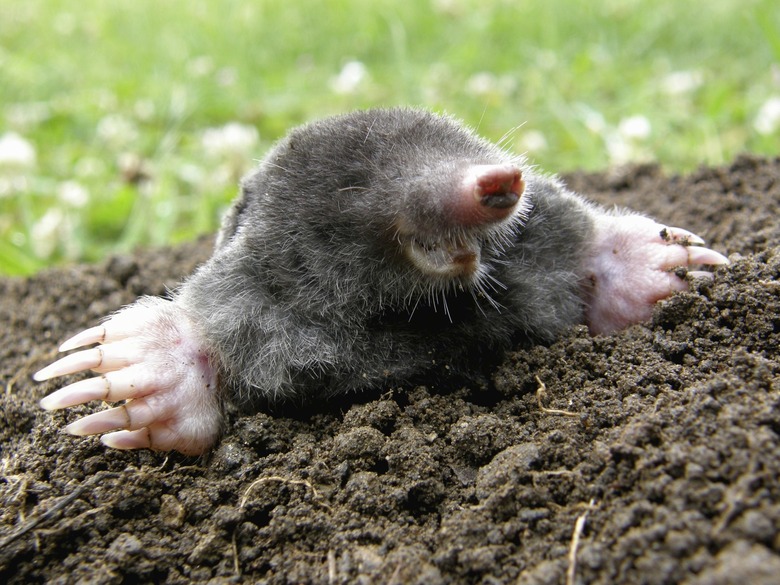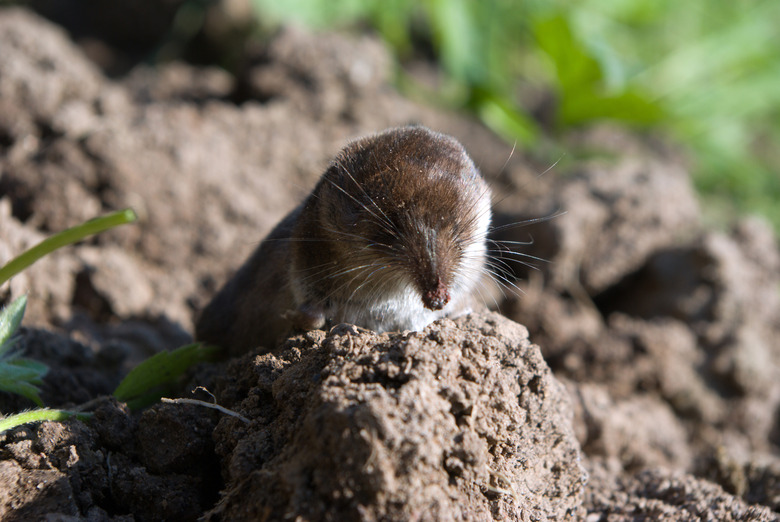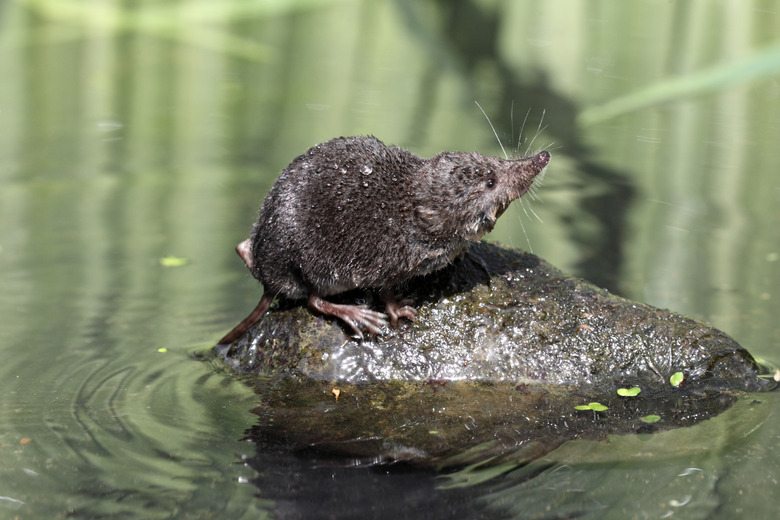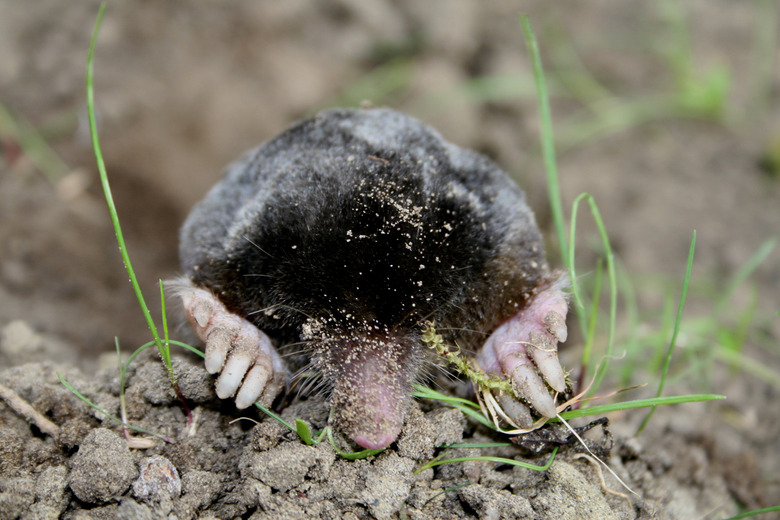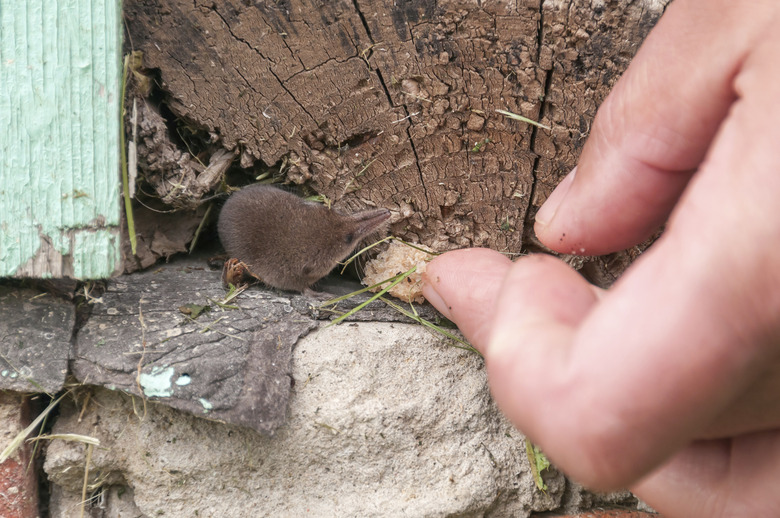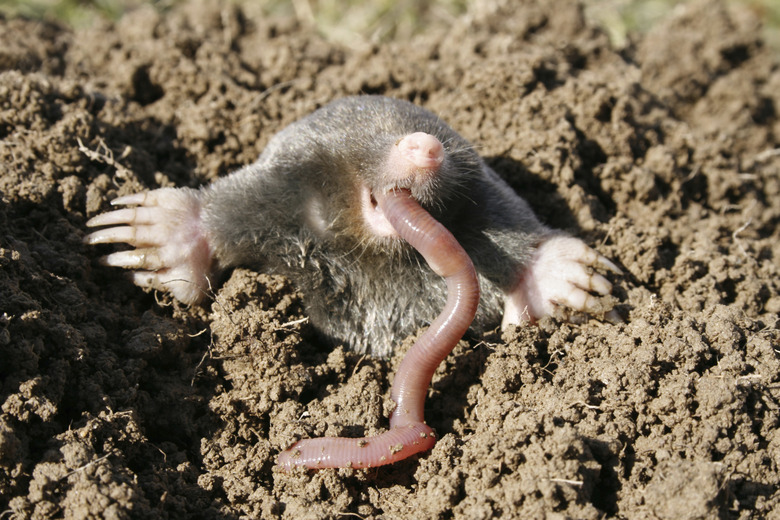Difference Between A Mole & A Shrew
At first glance, moles and shrews might look alike to the untrained eye, but they are very different mammals. There are seven species of moles and 33 different kinds of shrews in North America. Moles and shrews differ in their diets, size, habitat, and features.
In this post, we're going over the main shrew/mole differences including differences in size, physical structures, habitat, and more.
Shrew/Mole Size Difference
Shrew/Mole Size Difference
Moles are small mammals but still are significantly larger than shrews. Moles average around 7 inches in length and can weigh as much as 5 oz. in some species like the Eastern mole. The largest shrews are in the 3- to 5-inch range and the heaviest shrew in the United States, the northern short-tailed variety, weighs just an ounce as an adult.
Shrew/Mole Feet Shape Differences
Shrew/Mole Feet Shape Differences
Moles possess obviously enlarged forefeet, turned into an outward position that looks like someone doing the breaststroke, according to the National Audubon Field Guide to Mammals. The front feet have long claws and webbing that enable the mole to dig as quickly as one foot per minute. The hind feet of moles are small and narrow.
The mole uses their large feet in order to dig their own tunnels. Moles live in these underground tunnels and use them to avoid predators.
The feet of shrews are smaller than those of a mole and resemble the tiny and delicate feet of mice.
Shrew/Mole Snouts
Shrew/Mole Snouts
The snout of a mole is flexible and naked, lacking hair, and it is an important sensory organ that can extend a half-inch past the mouth. Mole snouts are pointy with a flat front portion similar to a pig nose.
Shrews have an elongated and pointed snout, but it has fur. Shrew snouts are pointier than mole snouts.
The teeth of a mole are white, but those of the shrew are a chestnut color because of the presence of iron in the enamel.
Shrew/Mole Habitat
Shrew/Mole Habitat
Shrews live in varied habitats, with some living in deciduous forests, others in coniferous woodlands and still others in desert and watery environs. Shrews will live underground in some cases, but most make tunnels through the leaf litter where they live. They'll often reuse tunnels made by other creatures, including moles.
Moles live underground all the time, with their surface ventures by accident and short-lived. Moles dig a series of tunnels and runways in search of food, with a central chamber den from which these tunnels radiate.
Shrew/Mole Eyes and Ears
Shrew/Mole Eyes and Ears
Both the eyes and ears of the mole are so tiny that we are not able to see them with the naked eye. While shrews also have very tiny eyes, they're almost always visible. Shrew ears are enlarged compared to mole ears, so those are also definitely visible with all shrew species.
Shrew/Mole Similarities
Shrew/Mole Similarities
Moles and shrews are mainly insectivores, consuming a diet of insects, earthworms, and other small creatures, although the shrew also is capable of killing and eating larger animals like birds and the young of rabbits.
Read more about the insects that live underground.
Both have five toes on each foot, thick but soft fur, and small eyes. The soft fur lets them move forward and backward in tight quarters with ease. Their hearing is acute, with the ears of moles hidden beneath the fur to keep them clear of dirt and debris. Both have insatiable appetites, often consuming as much as 100 percent of their body weight in a 24-hour period.
Read more about what shrews eat.
Both live in underground tunnels as well even though most shrews aren't capable of constructing them themselves.
References
- "National Audubon Society Field Guide to Mammals"; John O. Whitaker, Jr.; 2008
Cite This Article
MLA
Lindell, John. "Difference Between A Mole & A Shrew" sciencing.com, https://www.sciencing.com/difference-between-mole-shrew-6241500/. 30 July 2019.
APA
Lindell, John. (2019, July 30). Difference Between A Mole & A Shrew. sciencing.com. Retrieved from https://www.sciencing.com/difference-between-mole-shrew-6241500/
Chicago
Lindell, John. Difference Between A Mole & A Shrew last modified March 24, 2022. https://www.sciencing.com/difference-between-mole-shrew-6241500/
